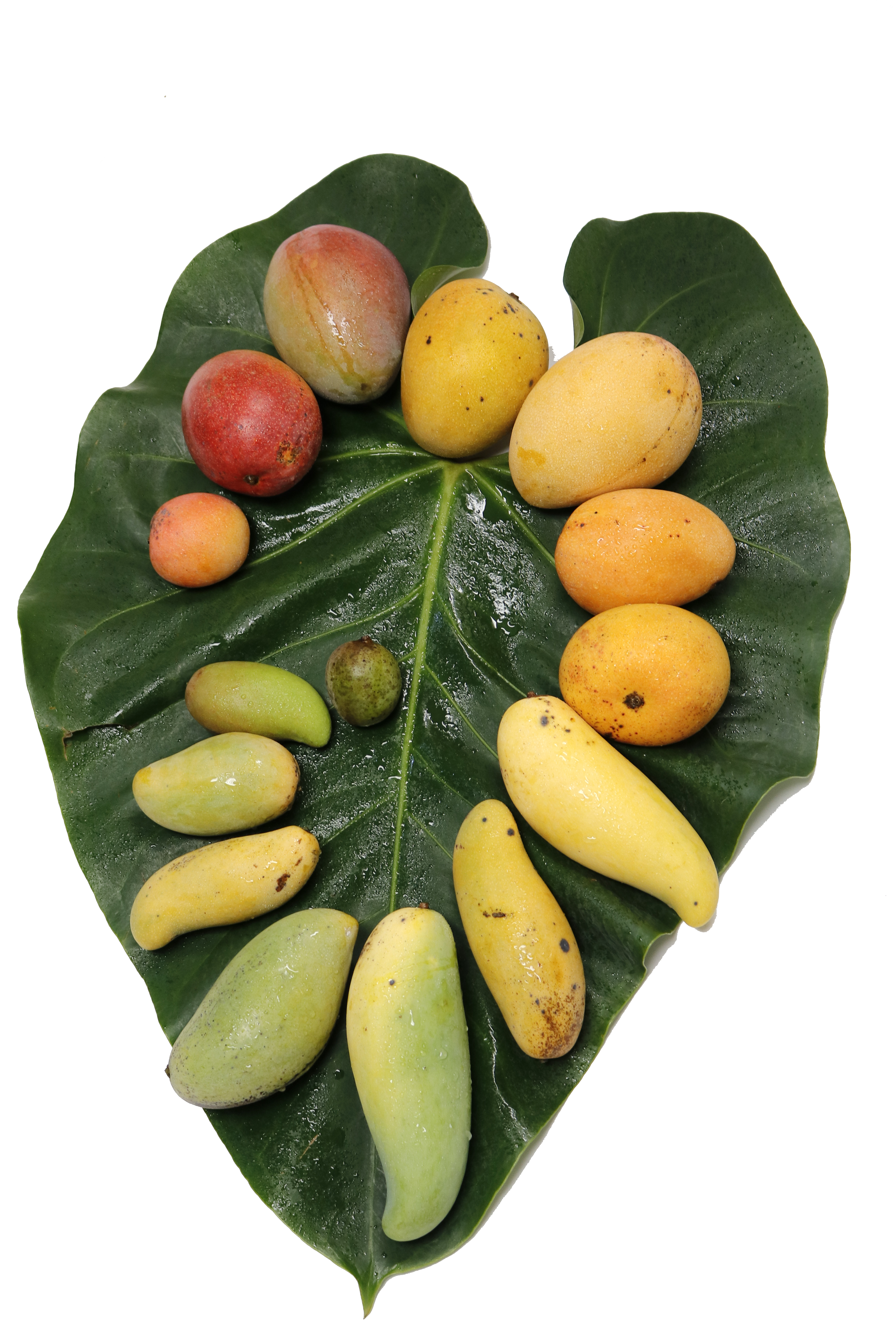Mangos: from Wild to Table – In Search of the Wild Mango

Why the search for our cultivated foods’ wild origins is so important.
Unlike previous years’ events, the 2017 Mango Festival at Fairchild did not feature mangos from any particular country. Instead, 2017’s festival celebrated “from wild to table.” But what does that mean? What’s wild about mangos? As with most questions in life, the answer is not entirely clear.
The search for the wild origin of our cultivated foods has enticed many agricultural explorers to remote and dangerous locations. Frank Meyer, in the service of Dr. David Fairchild, searched in China a century ago for the wild ancestor of the peach, and he found it! He described it as “a small green peach the size of a marble.” Not what you’d except to find at the supermarket, but its rootstock, for example, could be used to grow more appealing peaches in difficult situations.
A more modern view suggests we decipher the peach ancestor’s DNA for strengths inadvertently bred out of the more marketable peaches. Meyer also collected wild pears for the USDA, as they were the only varieties resistant to fire blight.
So many of our staple foods, especially grains, have been hybridized and cultivated for thousands of years. Corn, rice, wheat and countless others all originated from a wild source that our distant ancestors ate. They realized they could transplant these food sources or grow them from seed in more convenient locations, where they could be guarded, easily accessed and tended. Our ancestors naturally chose the plants that they found best: usually those bearing larger fruit, with greater yields, smaller seeds, etc.
These early farmers also realized they could modify the plants by selective parentage—a natural, though human-directed, form of genetic modification. This is at the root, so to speak, of farming and modern civilization itself. We can feed a lot of people this way, and even offer food like (nearly) seedless watermelon or bananas that are all pretty much equal in size, flavor and ripening times.
But we also lose quite a bit of diversity in practicing this kind of growing, known as monoculture. Not just in flavors and varieties that appeal to human tastes, but in genetic variety. Take the Cavendish banana: Its lack of diversity means the banana industry is facing a real threat from Panama disease. This fungus is lethal to the Cavendish, but not to some other banana varieties, most of which are not commercially grown. This is the danger inherent in monoculture. The same is true for almost all of our cultivated foodstuff. Given rising global temperatures, new diseases and pathogens, storms and risk of saltwater intruding into our drinking water supply, it’s important to cultivate for variety, and for plants that may tolerate conditions unsuitable to even their close relatives.
Back to the mango: There are something like 600 varieties known. To confuse matters further, the Indian vs. Southeast Asian cultivar dichotomy leads to more questions about what exactly makes a mango. The very question of what “species” means comes into play here, and far greater minds than mine haven’t definitively answered it.
Finding a truly wild ancestor of the mango might not be possible; it may no longer even exist.
So what does “wild to table” mean? To me, it means bringing back some of the diversity lost through millennia of cultivation, avoiding monoculture and researching through DNA and old-fashioned plant exploration what may or may not be “out there” still. Preserving diversity of crops will almost certainly prove vital, but we need to find that diversity first. Let’s not forget exploring for new tastes, new textures and “wild” food, whatever it is, with more nutrients, with new, useful compounds and for the simple joy of eating!
This article was written by Kenneth Setzer and originally published in the Summer 2017 issue of the Tropical Garden. Minor changes from the print version of this article were introduced to improve readability in a digital format.
Get Info About the 2025 Mango Festival at Fairchild in Miami!

